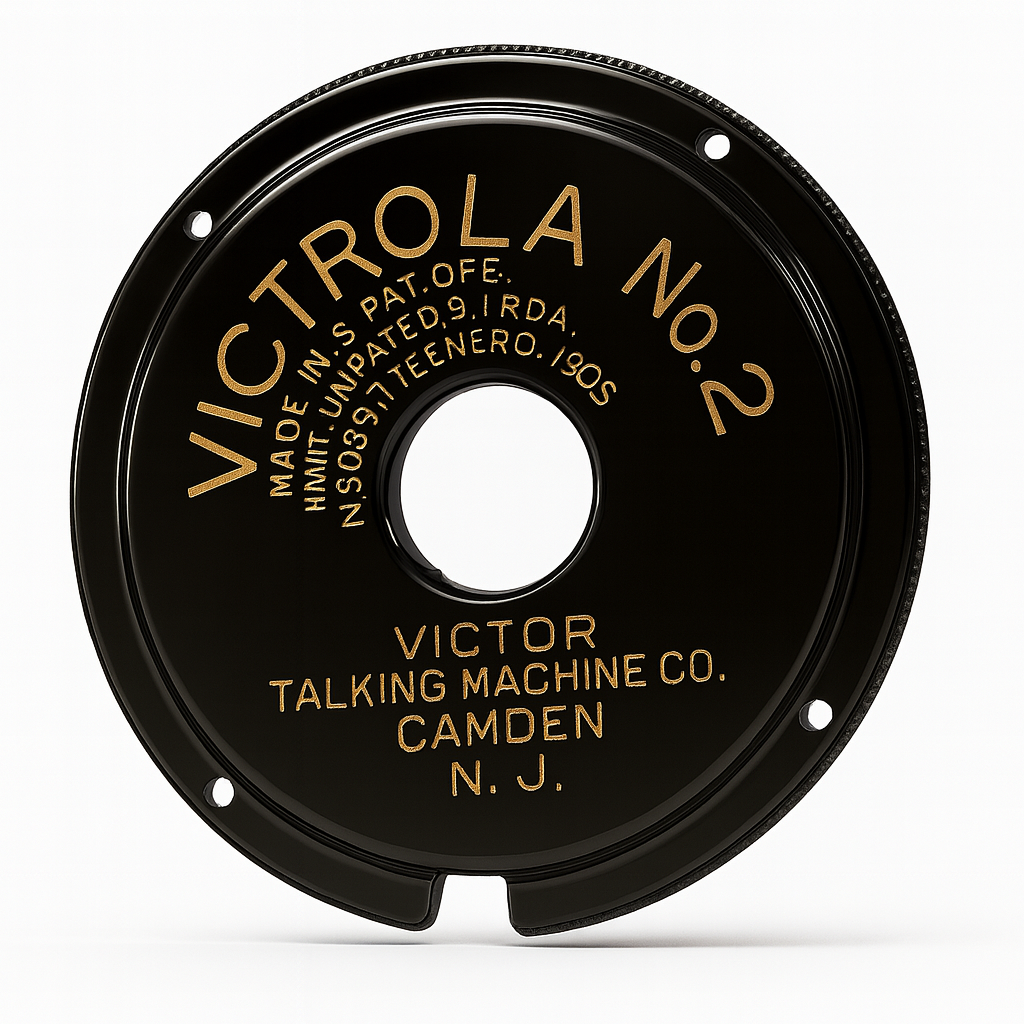Brief History of the Victrola No. 2 Reproducer
The Victor Talking Machine Company introduced the Victrola No. 2 reproducer in late 1917 as an upgrade over earlier soundboxes. It featured a larger diaphragm and improved needle bar design to handle the increasingly loud and dynamic recordings of the time. The No. 2 quickly became standard on mid-to-high range Victrolas and remained in production into the
mid-1920s, until it was gradually replaced by the Orthophonic soundbox after 1925.
During its production run, there were numerous small,
undocumented variations—changes to screws, plating, gaskets, and, notably, the lettering style on the front plate. Collectors identify at least two distinct
types:
- Thin Text – A lighter, finer engraving of
“VICTROLA No. 2.” - Full Text – A bolder, heavier version of the
same marking.
Speculation on the Text Change
Victor did not leave surviving documentation explaining why the lettering changed, but several plausible factors are supported by collector experience and manufacturing context:
- Tooling Wear and Replacement – The dies used to
stamp the lettering would have worn over time. When replaced or resharpened, the engraver may have chosen (or been instructed) to cut a bolder style for better legibility. - Supplier or Subcontractor Variation – Victor
sometimes sourced parts from multiple suppliers. Each shop might have had its own engraving plates, resulting in visible style differences.
3. Marketing / Aesthetic Refresh – By the early
1920s, Victor faced competition from louder, more modern reproducers. A heavier font could have been a subtle visual update to make the product look sturdier
or more premium without changing its mechanics.
Likely Timeline
While exact dates aren’t confirmed, the thin text style
seems more common on examples from the late 1910s to early 1920s, while the full text style appears more frequently on units from the mid-1920s, possibly
around 1923–1924. This fits with the period when Victor was updating cosmetics on several components across its product line before the Orthophonic launch.




